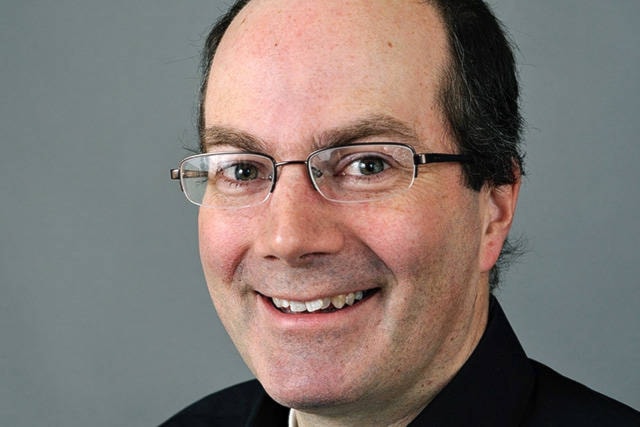If you only remember two numbers from the recently released federal-territorial study on the economic impact of the proposed carbon tax, try 5.4 and 0.2.
That is, by 2022 when the $50-per-tonne carbon tax is fully phased in, it is expected to reduce Yukon carbon emissions by 5.4 percent at the cost of our economy shrinking by 0.2 percent.
The report stresses that these are estimates, and there are many factors that might push the actual outcome one way or the other. Depending on how the carbon tax rebates get spent, the economic impact might even be smaller than 0.2 percent. But unless you want to code your own small open-economy recursive-dynamic computable general equilibrium model, we might as well use these estimates to get a rough idea of what the carbon tax is going to do.
The first thing that strikes me about these numbers is that they are quite small. The Yukon economy gyrates between boom and bust so widely, that a 0.2 percent swing would be hard to notice on Main Street.
A 5.4 percent reduction in our carbon emissions isn’t very big either. Canada’s commitment to the Paris Accord was a 30 per cent reduction below 2005 levels by 2030. And keep in mind that even if we achieved a 30 per cent reduction, which a recent report by Ottawa to the United Nations suggests we are not going to accomplish, that would still leave us pumping the other 70 per cent into the atmosphere year after year.
You don’t stop global warming by continuing to pump hundreds of megatonnes of carbon dioxide into the atmosphere every year.
So if someone tells you the carbon tax is going to wreck the Yukon economy, they are wildly exaggerating. Ditto if anyone tells you it is going to make a big difference to the planet.
To put it in context, a $50-per-tonne carbon tax works out to about 10 cents per litre at the gas pump. You’re currently paying a federal excise tax of 10 cents, a Yukon excise tax of 6.2 cents and GST of around seven cents. An additional 10 cents will be noticeable but not earth-shaking.
The report estimates that in 2018 a $10-per-tonne carbon tax would cost the average Yukon household about $260 per year. It would cost Yukoners in the lowest one-third of income-earners about $140, a smaller absolute amount but a higher percentage of their incomes. By 2022, the impact should be about triple, or about $780 per year for the average household.
Despite the details in the recent report, we still don’t know the answers to the big questions about the new tax. One is how it will be rebated. The Yukon government has committed to rebate the earnings from the tax to Yukon citizens and businesses. It is expected to bring in $26 million in 2022 and discussions with Ottawa continue on how to spread this money around.
We don’t know the details, and there are lots of options here. To give you a rough idea of the size of the numbers, if 50 per cent were returned to business and 50 per cent to citizens then each Yukoner would get a cheque for about $350.
Another possibility is that the money could be focused on low-income Yukoners and the communities, since they will likely be hit disproportionately hard. In 2015, for example, half of Yukoners had incomes below $45,804. Rebates could be limited to Yukoners below such a threshold.
In addition, the mining industry uses a lot of fuel and can’t pass its higher costs on to global metal markets. Transportation and air travel are two of the sectors expected to take the biggest hit by the report. Perhaps there should be rebates for these industries.
Perhaps there should be new programs to help Yukon businesses and residents transition from fossil fuels to electricity.
As you run through the list of groups to get special treatment you begin to realize that strategy leaves a large chunk of regular Yukoners and small businesses paying the full freight. Figuring out how to spread the $26 million around will be a touchy challenge for the government.
In the longer run, the policy implications get even more interesting. If we really want to dramatically reduce carbon emissions, the carbon tax will probably need to be much higher eventually. It’s hard to say how high, but think about your own purchasing habits. For example, how expensive would home heating oil or propane need to get before you went electric?
One internal federal study speculated that a carbon tax might need to be four to six times higher in 2050 than the figures above to get Canada to its targets.
On the other hand, the United States has dropped out of the Paris agreement, emissions continue to grow in China and India, and carbon pricing is already emerging as a big issue in the upcoming elections in Ontario and Alberta. Depending on the outcome of those elections, the political landscape in Canada would change dramatically if you had several big provinces abolishing their carbon pricing schemes and taking the feds to court.
Saskatchewan has been opposed to the concept for years, and Manitoba also recently threatened court action.
More locally, another long-run issue is electricity generation. If Yukoners are supposed to switch en masse to electric heat and vehicles, we are going to need a lot more renewable energy plants. Our track record building new renewable capacity in the last decade or two is unimpressive, to say it politely.
The carbon tax is supposed to come into effect on Jan. 1. Sometime before now and then, the government will let us know its plan for those rebates.
Keith Halliday is a Yukon economist and author of the MacBride Museum’s Aurore of the Yukon series of historical children’s adventure novels. He is a Ma Murray award-winner for best columnist.
